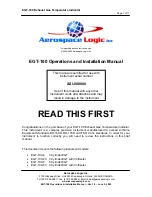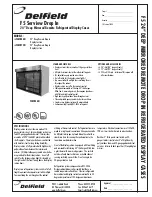
Blaze ASV-2 Operating Manual
Page 8
4.3 VSI Setup (Vertical Speed Indicator Setup)
VSI Display:
Select if you want the VSI to be displayed.
VSI Unit:
Select if you want the VSI to be displayed in
"ft/min"
(feet/minute) or
"m/s"
(meters/second).
Scale:
Select the VSI scale most suited for your aircraft.
VSI Cal:
This is a function that is used to calibrate your VSI to read exact rates of climb or decent. This function works as a
percentage of initial reading. The default setting for this function is 100%. Increasing this value increases the VSI reading
and decreasing the value decreases the reading.
Suggested VSI calibration method
After you have installed the instrument, perform a calibration flight. This should be done in very calm conditions.
Turbulence and thermal activity will make accurate calibration impossible. Many areas have ideal conditions during early
mornings or late afternoons. Place the instrument in ft/min for ease of calibration. Take your aircraft to a few
thousand feet above ground and start a glide with a low power setting. Take a stopwatch and when the glide is stable
(stable VSI reading) start the stopwatch. Take note of your altimeter reading at the same time. Continue the stable glide
for one minute exactly. After the minute has finished, take another reading of your altimeter.
Example:
VSI reading during stable glide: -400 ft/min
Start altitude: 2500 ft.
End altitude: 2050 ft.
In the above example the VSI is under reading by about 12%. Set your VSI calibration to 112% to cancel out the error.





























